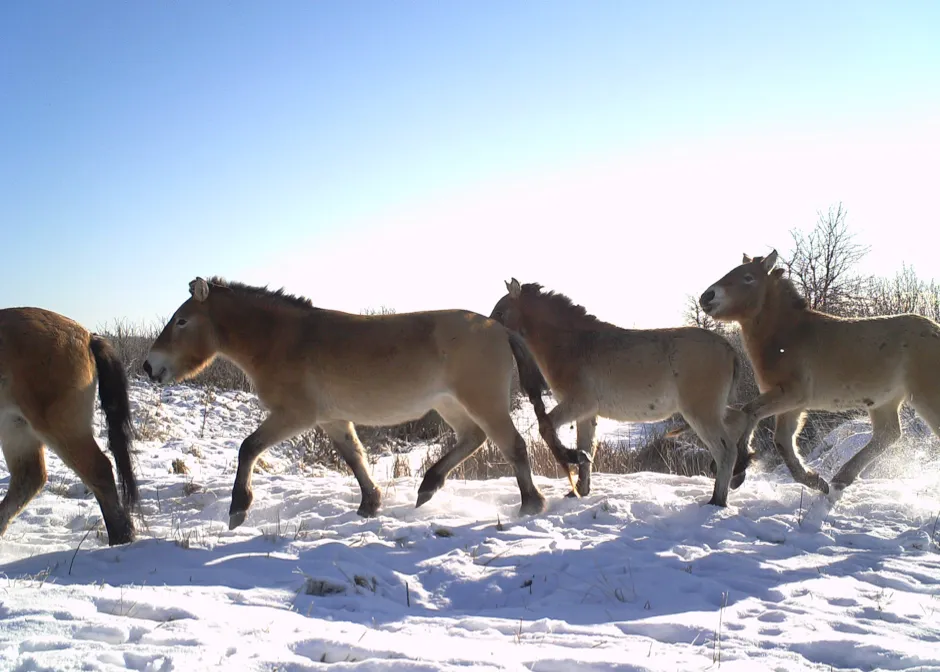More than three decades after the Chernobyl accident, many people – not least tens of thousands of ‘disaster tourists’ who now visit the site – want to know: is the area safe? HBO’s recent dramatisation Chernobyl showed the horrors of the accident itself, but what are the radiation risks to people visiting the area and what has happened to the wildlife?
In the early hours of 26 April 1986, the Chernobyl number 4 reactor suffered what remains the world’s worst nuclear accident. By early May, nearly 120,000 people had been evacuated from the ‘Chernobyl Exclusion Zone’ (CEZ) – an area almost the size of Northumbria – around the Chernobyl site. This area remains abandoned today.
Read more:
Radiation is scary, conjuring up images of atomic bombs, mutation and cancer, but we tend to forget that we are all continuously exposed to natural radioactivity from soil and rocks. Even air travel exposes us to radiation coming from space. Chernobyl tourists (who do not visit the most contaminated ‘hot spots’) do get a small increase in their radiation dose but this is similar to the cosmic radiation dose they received on their flight to Ukraine.
Our calculations show that the inhalation dose people get in most of the CEZ is lower than in places like Cornwall that have higher-than-average natural radiation. As long as visitors to the CEZ use common sense, it is now safe to visit.
Animals and plants live in the CEZ year-round and get higher radiation doses than tourists. The effects of radiation on wildlife in the CEZ is a contentious issue. Straight after the accident, radiation levels were about 100 times greater than they are now and there were significant impacts. The best-known is an area of between four and six square kilometres where pine trees received enough radiation to kill them. Their needles turned reddish-orange and Soviet scientists named the area the ‘Red Forest’.
The CEZ now has much lower radiation levels and is home to large wildlife populations, including many rare species, as documented in the final dramatic scene of David Attenborough’s Our Planet. Most studies have found subtle, if any, effects on wildlife. Our studies support this, showing that there may be radiation effects at the most contaminated sites.
Read more:
- Animals return to site of Chernobyl nuclear disaster
- How plants can survive space missions and Chernobyl
This includes the Red Forest, but we know that this highly contaminated area has not fully recovered from the damage done in 1986. We are still unsure if effects observed now in the Red Forest are due to current exposure rates, or are a residual effect of much higher dose rates in 1986, or are due to poor habitat quality.
The vast majority of the CEZ wildlife is flourishing, not because radiation is good for the ecosystem, but because of the virtual absence of human activities for more than 30 years. In the Belarussian part of the CEZ, numbers of large mammals have increased since 1986 and are comparable to those in nature reserves elsewhere in Belarus.

In the Ukrainian sector, more than 400 species of vertebrates have been recorded. Our large motion-activated camera study has recorded 16 species of medium to large mammals including brown bear, European bison, Przewalski’s horse, wolf and lynx. The species observed were basically the same in areas of different contamination, including the Red Forest. The animals appear healthy. In the case of Przewalski’s horse, introduced into the CEZ in the mid-1990s, the population is successfully breeding and we have evidence of long lives.
Despite misleading headlines, Chernobyl is recovering. Back in 2006, the World Health Organization identified that the social and psychological impacts of Chernobyl on people have been greater than the health effects from radiation.
In a world threatened by a multitude of environmental hazards, Chernobyl still has much to teach us about our understanding of risk and about the recovery of natural ecosystems when the pressure of human habitation is removed.
Visit the BBC's Reality Check website at bit.ly/reality_check_ or follow them on Twitter@BBCRealityCheck
Follow Science Focus onTwitter,Facebook, Instagramand Flipboard
